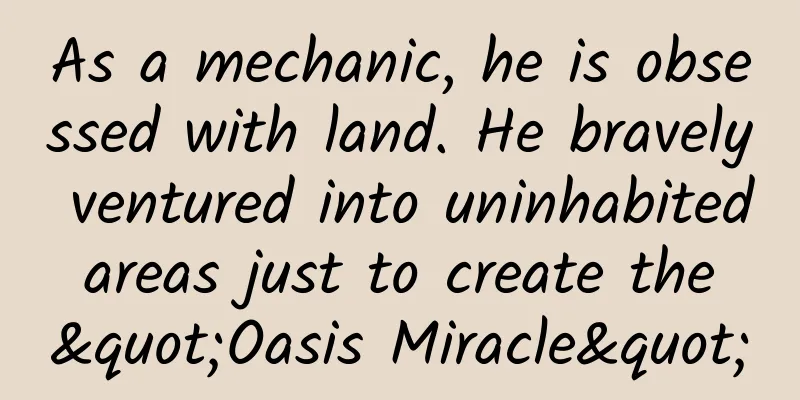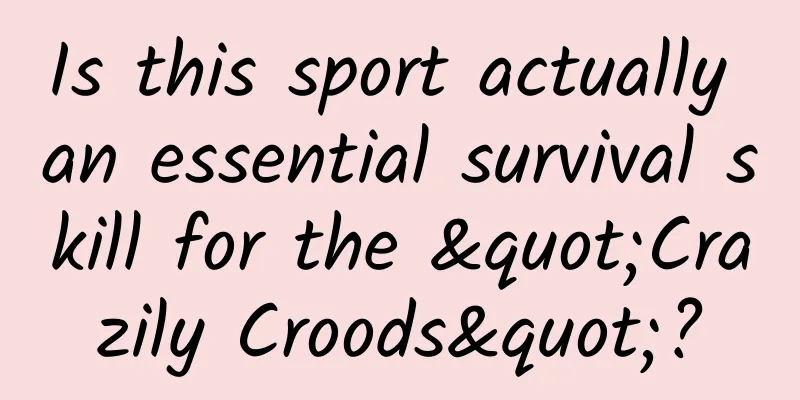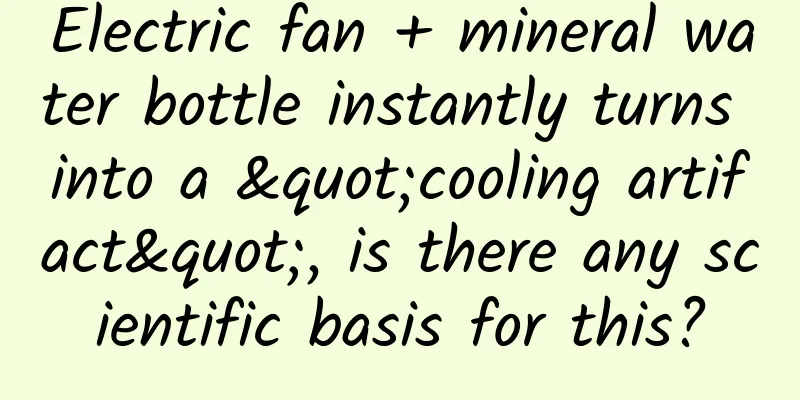As a mechanic, he is obsessed with land. He bravely ventured into uninhabited areas just to create the "Oasis Miracle"

|
“The area of desertified land in my country is about 1.7 million square kilometers. Even if we can transform only 1% of it, it will expand the arable land by more than 25 million mu!” Yi Zhijian is a man of strong will. After 15 years of ups and downs, as the vice president of Chongqing Jiaotong University, he led the sand control research team to bravely enter the desert and the "no man's land" of science, and realized the oasis miracle of "turning sand into soil" on land where life is rarely seen! Before them, no one could have imagined that it would be a group of mechanics who had nothing to do with ecology, plants, soil, sand control and other professions who could turn the desert into an oasis in such a short period of time. Yi Zhijian (Photographer: Ning Ying) The story is in the wine Yi Zhijian is not a heavy drinker. He rarely drinks in his daily life, but whenever he entertains guests, he always brings a bottle of "Promise of Sand". "This is a wine we brew with sorghum grown in the desert." During the meal, Yi Zhijian always introduces a little to the guests, "The wine bottle is specially made, with a special space for sand from the Ulan Buh Desert. The production scale of this sorghum wine is not large at present, and we don't plan to promote it. This can be regarded as a preliminary industrialization exploration of our team." Open the cork and let the mellow and rich aroma of wine float into your nose and linger on the tip of your tongue. The story of Yi Zhijian and his team's mechanical sand control will unfold in the fragrance. In Yi Zhijian's own memory, he didn't get to know the vast desert until 2016. Having lived in a mountain city since childhood, he had almost no direct experience of the vastness and wind and sand, but as a mechanic, he was inexplicably concerned about the problem of land desertification. "Land desertification has always been called the 'cancer of the earth'. my country is one of the countries with the largest desertification area, the largest affected population, and the most serious wind and sand hazards in the world. I have always been very worried about this problem." But like most people, Yi Zhijian had not thought deeply about the idea of solving environmental problems from a mechanical perspective for a long time. It was not until 2009 that he began to study "granular material mechanics" and accidentally opened a new chapter in scientific research. However, it took Yi Zhijian and his team eight years to move from theoretical exploration to practice. Essentially, the transformation of granular matter from discrete state to rheological state and solid state relies on a universal constraint relationship. "If granular matter can change its state by changing its constraints, can sand also change its discrete state through mechanical constraints and transform into 'soil' that is solid when dry and rheological when wet?" The sudden inspiration is the source of the original mechanical theory - the universal joint constraint relationship between soil particles (abbreviated as "ODI constraint"), and it is also the origin of Yi Zhijian's relationship with the desert. In 2013, under the interpretation and continuous innovation of Yi Zhijian's team, plant cellulose adhesive based on the principle of universal joint constraint gradually became a high-scoring answer to the desert problem - just mix the right amount of adhesive and water in the sand, and the sand can acquire the same ecological and mechanical properties as natural soil: it has a certain flexibility, can retain water and fertilizer, and is breathable, providing elastic space for the growth of plant roots; it also has a certain rigidity to "hold" the plant roots and maintain the stability of the plants. After all, truth needs to be tested in large-scale practice. The piece of land used to simulate the desert in the school is just a "square inch" compared to the vast desert of more than 10,000 square kilometers. Taking this into consideration, Yi Zhijian began to look for the first test field for the "code" of "turning sand into soil". So, in the spring of 2016, he led a scientific research team into the Ulan Buh Desert. Taming the Red Bull The Ulan Buh Desert is one of the eight largest deserts in China, located in Bayannur City and Alxa League in the western part of Inner Mongolia Autonomous Region. In Mongolian, "Ulan Buh" means "red bull". The evolution of this hot land is just as its name suggests, becoming increasingly hot and inaccessible. Ulan Buh Desert During the Western Han Dynasty more than 2,000 years ago, Ulan Buh was a vast fertile land, completely different from the barren moving desert of today. It was not until the Tang and Song dynasties that desertification began to become apparent. Due to the lack of control measures, the area gradually became "three feet deep in sand, so deep that horses could not pass". The speed of desertification became increasingly faster, and the area was completely reduced to a "red bull" that was difficult for humans to tame. But even Yi Zhijian himself did not expect that the turnaround would come so suddenly. Only a few months after the experiment, the "oasis miracle" was born in this vast yellow sand - they used the "desert soilification" technology to open up an oasis the size of two football fields. In the lush greenery and the fragrance of fruits and vegetables, this unruly "red bull" showed a "submission" attitude in front of humans for the first time. This is also the first time that the scientific ideas of Yi Zhijian's team have blossomed and borne fruit on real land. As the team leader, Yi Zhijian felt unprecedented joy. "When I first selected the test site, I put forward three requirements: 'no grass, adequate water resources, and no interference from people'. Alxa League recommended Ulan Buhe based on these requirements and told us that the conditions in Ulan Buhe are the most typical and the worst. If we conquer Ulan Buhe, other deserts will be no problem." The desert oasis created by Yi Zhijian's team Once the steps and confidence to bravely enter the no-man's land began, they would not stop, even though Yi Zhijian knew it would be a lonely and difficult road. "Did you ever waver?" When asked this question many years later, his answer was just as his name suggests: "No. I always believed that I was doing the right thing, even if no one else had done it before." But precisely because "no one has done it before", after the results were well-known in the industry, there were naturally flowers and applause, but controversial voices also followed, "The new technology cannot be supported by the current theory. Is it 'pseudoscience'?" "The land planted with crops after 'desert soil transformation' still needs watering. Is it not suitable for the desert, which is already short of water?" "Are the added materials polluting? Will the cost of transformation be very high? Is it worth promoting?" "The desert is one of the components of the earth's natural ecology. Would it be an act of destroying the ecology to turn all deserts into oases?" ………… Yi Zhijian did not rush to refute, nor did he stop his research. Instead, in the nearly six years that followed, he quietly collected a lot of data in response to various doubts, including the Ulan Buh Desert in Alxa League, Inner Mongolia, the Taklimakan Desert in Hotan, Xinjiang, the restored desertified grassland in Ruoergai, Sichuan, the Xisha Islands and reefs, and the desertified belt in the suburbs of Lhasa, Tibet, which had benefited from the "desert soilification". The total area of the desertified land is nearly 20,000 acres. Happy to see desert turned into fertile fields On September 18, 2021, the China Association for Promoting Industry-University-Research Cooperation organized an evaluation committee to hold an evaluation meeting on the "Key Technologies for Desert Soilization and Ecological Governance Demonstration Project" in Wuhai, Inner Mongolia. The experts of the evaluation committee carefully questioned the various indicators after desert soilization, the economic benefits and ecological benefits generated. "We have selected a group of plants suitable for desert cultivation, such as pennisetum, sorghum and dozens of other plants, all of which have high yields." "According to monitoring, the water consumption per mu of the Ulan Buh Desert in Inner Mongolia is 300 to 500 cubic meters after soilification, which saves more than 30% of the local farmland irrigation quota standard." "At present, the team's various scientific research achievements in technological innovation and production systems have been granted 22 invention patents in China, Australia, Morocco and other countries." "Not all deserts need to be restored to soil, and not all sand can be restored to soil. We have conducted rigorous investigations and demonstrations. Deserts formed by natural conditions must still be maintained." In response to the questions raised by the experts, Yi Zhijian and his team members responded one by one, with detailed data and fluent answers. After more than three hours of discussion, the experts of the evaluation committee finally agreed that "'Desert Soilization' is an original and groundbreaking achievement with obvious economic, social and ecological benefits. It is of great significance to the country's ecological security and food security, and provides a reference for global desert governance. The results have reached the international leading level." Gradually, the controversy became smaller and smaller until it disappeared. Yi Zhijian was always grateful for the increasing support and encouragement. "When the project had no money, many people in the team bet their fortunes and even took out loans for this project. Now everything is different. Turning the desert into an oasis is the dream of mankind. If this dream can be realized a little bit in our hands, it will be our honor and achievement." Desert turns into fertile fields As for his own illness and suffering, Yi Zhijian is used to taking it easy, "No need to say more, all problems are solved now." In 2017, Yi Zhijian was diagnosed with a tumor. Because the disease was still in the early stages, he underwent surgery as soon as possible and recovered. In 2024, he just had heart surgery... Every problem that Yi Zhijian "solved" was actually not a small problem. Always facing the disease rationally and planning the work process that he can still stick to without distraction, Yi Zhijian feels lucky every time he escapes from the clutches of the disease. And when the desolation of the desert fades away and green reappears, people see Yi Zhijian in the great team of ecological restoration, so how can they not feel lucky? |
<<: These water sources are special. If used properly, they can make water "regenerate"!
Recommend
Refined user growth case!
ABtest is gaining more and more attention. Fast a...
Will this oil promote cancer metastasis? Can we still eat instant noodles, fried chicken, and puffed foods?
Palm oil is widely used in processed foods, so wh...
What is the relationship between products, channels and shopping guide brands?
All customers will be involved in three major iss...
Xiaokele mobile phone review: a thousand-yuan camera magic tool (appearance and system)
From the "unavailable" Redmi to the pop...
3 Tips for Writing an Event Planning Proposal
Let’s talk about planning and writing plans today...
Advertising and marketing case analysis skills!
When it comes to learning methods, "looking ...
After the traffic dividend disappears, how to play information flow advertising?
After the rapid development of mobile Internet in...
2018 Website Promotion Contract
Party A: Phone: Address: Zip Code: Party B: Phone...
Among the mythical beasts in the Classic of Mountains and Seas, which one has the highest martial arts power?
Mixed Knowledge Specially designed to cure confus...
Seamless transition from winter to summer, down jackets are not put away yet and we have to wear them again? A new cold wave is coming
Recently, with a "super warming", many ...
Baidu Promotion: The latest version of Baidu information flow advertising product manual!
What is Baidu information flow advertising ? What...
Short video promotion and operation: Who has better ability to bring goods?
Why do the giants all want to make short videos? ...
Soft article placement, using 600 yuan to achieve 20,000 yuan of effect
Soft article placement refers to the process of p...
[Creative Cultivation Program] Does playing with your phone hurt your brain? What the fruit fly experiment tells us
Presumably, for many people, checking their phone...
The highest level of operation is to achieve great results with little effort. Let’s talk about the cost awareness of operators!
I must single this out. The highest level of an o...









